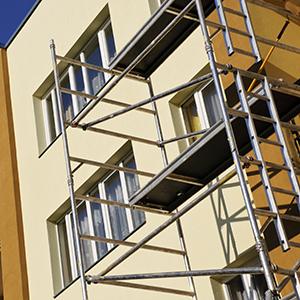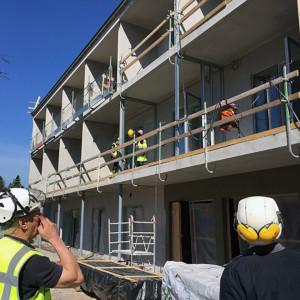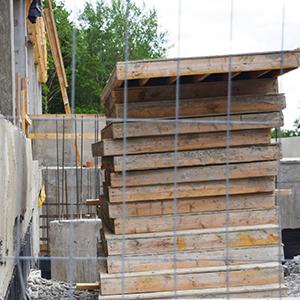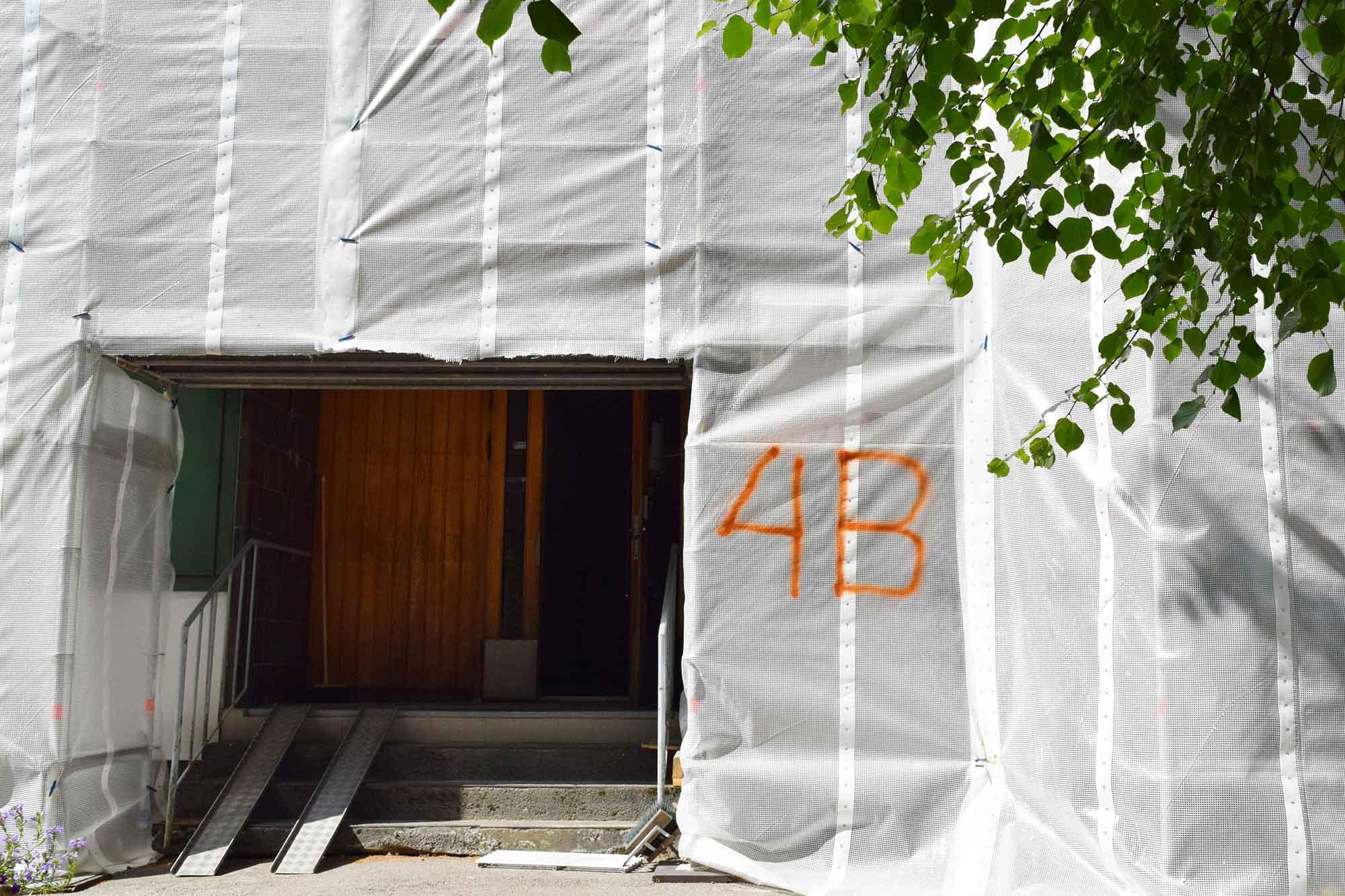Successful housing company repair project is a lengthy process consisting of several stages
Housing company repair projects may seem lengthy, expensive and even daunting to both the housing company’s board of directors and the residents. Such a project can be successfully completed, however, provided that the preparations are done right and competent experts are used as an aid. It requires plenty of work and patience, but a successful repair project can only be realised through preventive maintenance.
Where to start if you are aiming for systematic property management and a successful housing company repair project?
Condition evaluation and long-term repair and maintenance plan proposal are the first steps in a housing company repair project
By placing an order for a condition evaluation of the property, the board and the property manager will receive information on the condition of the property. It is like a general practitioner’s visit to the site, although three experts will actually visit the site. The condition evaluation will determine the condition of the property’s structures and systems, as well as provide future repair needs in a long-term repair and maintenance plan proposal (PTS). It is an expert opinion on how the property should be maintained.
A condition evaluation is an important tool for all housing companies, starting from ones built ten years ago. By thinking far ahead, you will be able to schedule renovations in the manner that is wisest from the technical and financial perspective: the timing of a repair project has an important role in terms of the total costs. Proactive inspections allow you to implement repair projects in due time, so that you do not have to choose the most extensive repair method that will be the most expensive.
Surprising repair projects will take a toll on the finances of the housing company and its residents. According to a study by VTT Technical Research Centre of Finland, implementing repairs on time instead of too late can give rise to savings of up to 30%.

Condition surveys provide more detailed information on problems
It is very important to perform the condition surveys and further surveys recommended in a condition evaluation report, because only a condition survey will determine the actual condition of a structure or a technical system. A condition evaluation is a sensory inspection – a condition survey goes deeper than just the surface. The structure will be opened and samples will be taken if necessary. If a condition evaluation is a general practitioner’s visit, a condition survey is a visit by a physician who specialises in the structure or structural component in question.
In addition, a condition survey can be used as the basis of project planning and detailed planning during a construction project. Determining the correct repair method is not possible without a condition survey.
Project manager is necessary for a successful housing company repair project
The project manager is the head of the housing company repair project. The project manager ensures that the correct surveys are performed and keeps the wheels turning, as well as controls surveys and project planning. The project manager is always aware of the current project stage and acts as an assistant and contact person for the property manager, the board and also the residents in all project-related matters.
The project manager lightens the workload of the property manager and the board and assists them in successfully completing the project. One of the most important tasks of the project manager is preparing a realistic project schedule.
The property manager and the board of the housing company should hire a competent and experienced project manager to manage the project immediately after having detected the need to start a repair project to ensure that the project manager can be involved from the very beginning.

90% of project costs are determined at the project planning stage
Even if the project planning of a future repair project is started after a couple of condition surveys, an experienced project planning team will often recommend other necessary additional condition surveys for the board of the housing company during project planning. This is to obtain enough information on the condition of the structures or systems.
Approximately 90% of the project’s costs are determined at the project planning stage, because this stage is all about specifying what the project entails. In many pipeline renovation projects, washrooms are renovated, public premises are repainted, lighting systems are improved and the yard area may also be renovated in addition to replacing the pipelines and renovating electricity systems, because combining several projects is wise, as the yard area needs to be opened to install the pipes in any case. If such “additional work” is not taken into account in due time, there may be additional costs or scheduling problems during the project period, or some of the necessary jobs may not be completed at all.
Project planning stage is about deciding what to repair and how
The project schedule and the manner in which the repairs will be realised are determined at the project planning stage. In a pipeline renovation project, for instance, the cost level largely depends on whether the pipes will be repaired by coating them on the inside or whether the “traditional” method of removing the old pipes and replacing them with new ones will be used. A decision on this matter may already be made at the condition survey stage if the structures, foundation or other characteristics of the building prevent or assist in the implementation of a specific alternative. The decision has a major impact especially on the cost level.
The project manager will arrange a competitive bidding on the housing company’s project plan. They will assist the board of the housing company in project planning, arrange the competitive bidding and control all the necessary (additional) condition surveys during the project planning period. Once the project plan has been approved by the board, it will be presented for approval to the shareholders at a general meeting. When this has been done, the competitive bidding can start.
Tervetalo (“Healthy Building”) construction methods, i.e. humidity and hygiene matters, will also be taken into account at the project planning stage. For example, during the demolition stage of a pipeline renovation project, the spreading of dust must be considered even though the residents are most often not living in the building during the renovation. In the case of a roof or exterior face renovation project, a decision must be made as to whether the building will be covered with a hood-type cover, which is somewhat more expensive but will achieve a better protection from the weather conditions than more affordable tarpaulins.
Project planning is performed with a project planning team consisting of experts from a variety of sectors
Planning is the most important stage of a project, and sufficient time must be reserved for it. If the project is started when there are already pipeline leaks, for instance, the entire project will have to be rushed. Several months should be reserved for project planning. During this period, the project planning team should meet a couple of times. In addition to the property manager and the board, the team will consist of experts from a variety of fields of technology, including the project manager.
When the project is planned with care, the property manager and the board will obtain proper project planning documentation and the required appendices that will assist them in more smoothly completing the project. Furthermore, obtaining a loan commitment from the bank before the general meeting will be easier. The loan commitment should include provisions for additional work and modifications (an additional budget of approximately 10%).

Materials to be used will be chosen during detailed planning
Detailed planning will start when the framework for the project has been specified in the project plan. The experts from the various fields and design engineers will prepare drawings and a repair work specification for the site planning scheme: what will be done, which materials will be used and which regulations apply to the project. If a building permit is required, official planning standards and regulations specify the project’s implementation method.
Detailed planning will also take some time. In the case of a large project, the experts will need several months to prepare the drawings and other documentation. Convening a project team meeting after the draft stage is recommended so that any necessary minor changes can be made. The project manager will assist the board and the property manager also at this stage by maintaining smooth cooperation with the experts.
In the case of a larger renovation project for which a building permit is required, a principal designer is also required. The principal designer will reconcile the plans of the different sectors (structural, HVAC, automation and electrical engineering, architect, etc.) in the optimal manner for the project.
The detailed plan should be presented to the housing company for approval at a separate information event. Communication is one of the most important aspects for the success of a repair project, and that is where the project manager’s expertise comes in handy. Submitting the plans for viewing in advance and otherwise maintaining a dialogue between the different parties are part of the good practices to be used.
Competitive bidding for contractors will go smoothly if planning documents are appropriate
Once detailed planning is complete and the housing company information event has been arranged, it is time to start the competitive bidding process to select the contractor. The project manager (or a developer consultant working together with the project manager) will prepare the invitation to tender and its appendices with care to ensure that all the submitted offers can be compared. A properly implemented planning stage and professional documentation will ensure success of the competitive bidding and make comparing the offers easier.
Two to four contractors are usually invited to attend tender negotiations where the repair project’s goals and the requirements for each stage are reviewed in detail. Once a contractor has been selected, the project will be launched based on a majority decision of the housing company’s extraordinary general meeting or spring/autumn general meeting. An experienced project manager will inform the shareholders of the project content and the decisions to be made at least one week in advance to ensure that the shareholders have sufficient time to familiarise themselves with the project and ask questions
Supervisor will manage the project, as well as compliance with the budget and the schedule
The task of a construction project supervisor (or supervisors) is to ensure that the repair work is done in accordance with the agreed schedule and the plans. The supervisor will visit the construction site sufficiently often and document each visit in as much detail as possible in, for instance, weekly supervision reports to be submitted to the client. Such documentation is of utmost importance, because without documentation it would be impossible to determine in arrears what was done at the construction site and when.
Additional work and modifications are bound to happen in larger projects, and they must be managed. Additional work, modifications and completed stages will be discussed at monthly site meetings. Compliance with the project budget and completed jobs will also be reviewed at the meetings. This way, the property manager will always be aware of whether the funds reserved for the project are sufficient or whether the budget will be exceeded.
The supervisor will also handle model inspections in the case of a washroom renovation project, for example. First completing one washroom and inspecting it to ensure that it has been properly built and then approving this final result as the model room to be used for the rest of the project is a good approach.
Particularly during the implementation stage, communication between the contractor (supervised by the project manager) and the residents and shareholders of the housing company is important. The residents will want to know how the project is proceeding and whether the work is progressing on schedule because they care for their home and are interested in any project involving it.
At the end of the project, a site acceptance inspection will be arranged to verify that the work has been completed according to the plans and quality requirements. Attendees of the inspection will include the supervisor, the contractor and representatives of the housing company. The site cannot be taken into use until after the acceptance inspection.
Contractor’s warranty period for completed repairs is two years
The project manager will continue their work during the defects liability period or warranty period of the repair project. The contractor’s warranty is usually two years. If one of the residents reports a fault during the defects liability period, the supervisor and a representative of the housing company will come to check the site and report the fault to the contractor. Any faults that cause a safety risk or the risk of further damage will be immediately repaired under the warranty, but all merely aesthetic repairs, for example, will be realised at one go (within two years of the completion of the project).
A defects liability period inspection will be performed by the contractor, the supervisor and a representative of the housing company 18 months to two years after the acceptance inspection. This is the most important inspection after the completion of a repair project from the housing company’s viewpoint, because any complaints about observed faults and defects must be lodged at that time at the latest. It will be too late after that.
The defects liability period collateral security of 2% from the contract sum total (without VAT) will be returned to the contractor after the expiration of the defects liability period, provided that all defects and deficiencies reported during the defects liability period have been repaired and the repairs have been accepted. Especially in the case of a large project, this two percent “deposit” is a good guarantee for the housing company on the contractor’s willingness to implement the warranty repairs.



